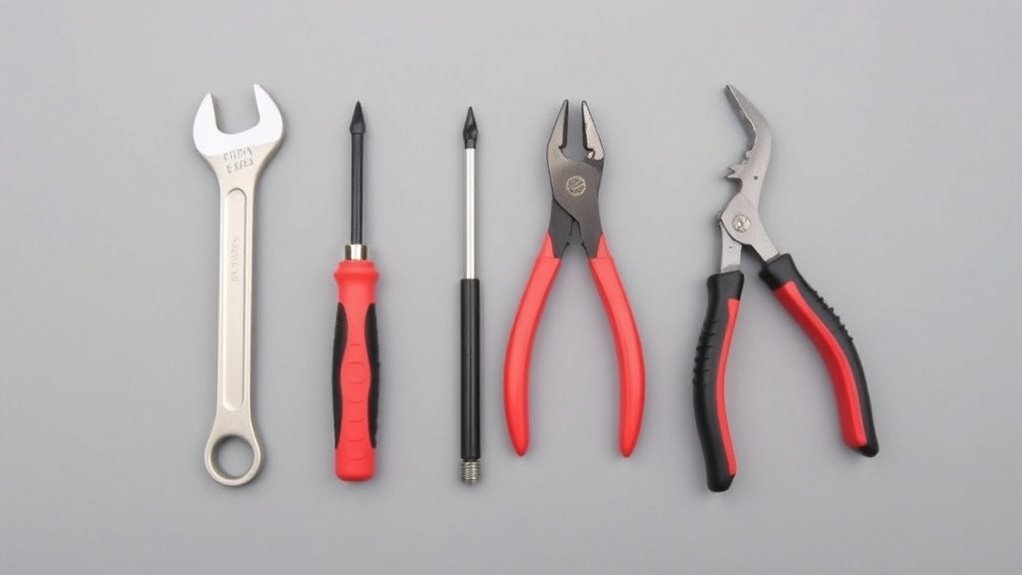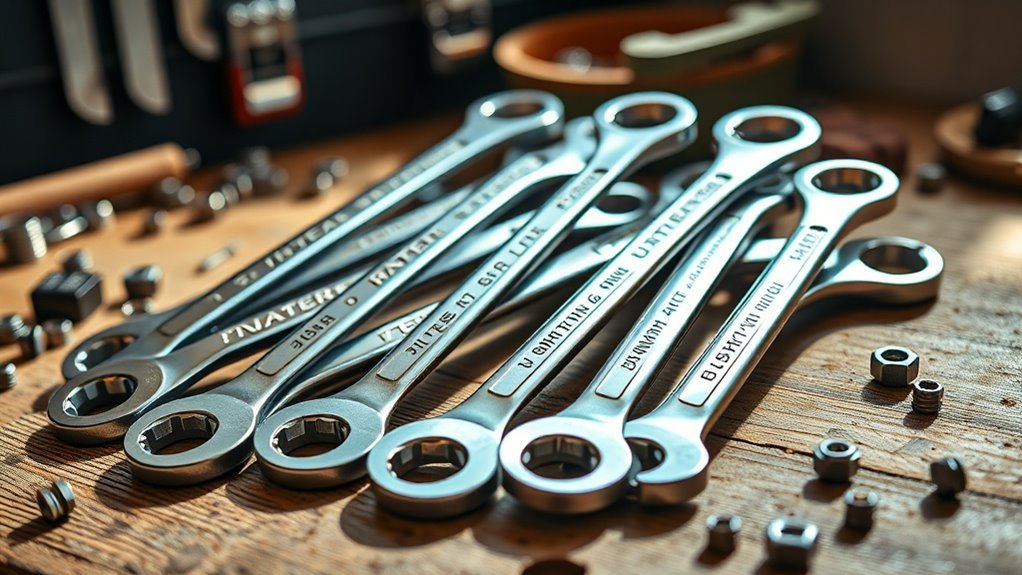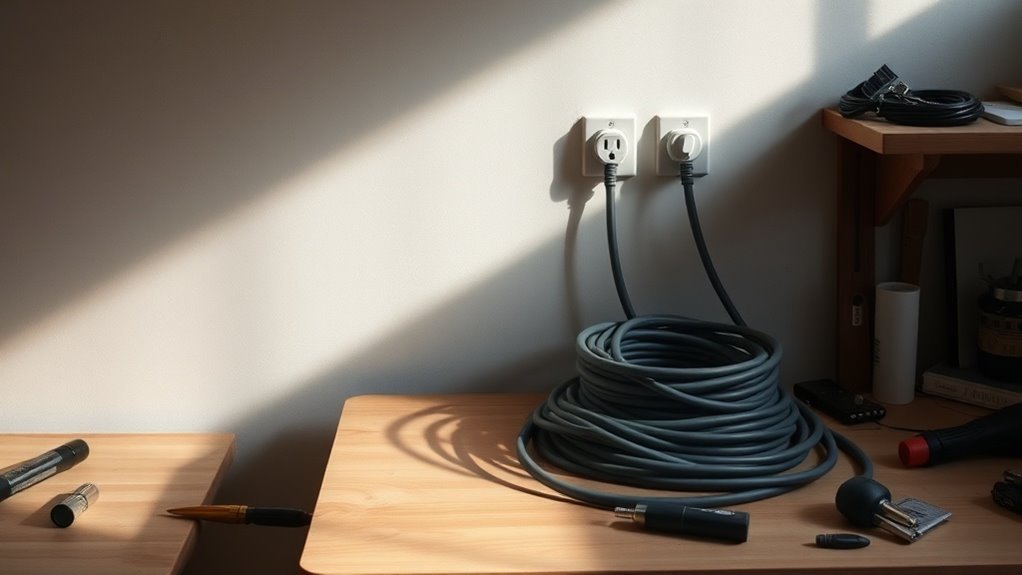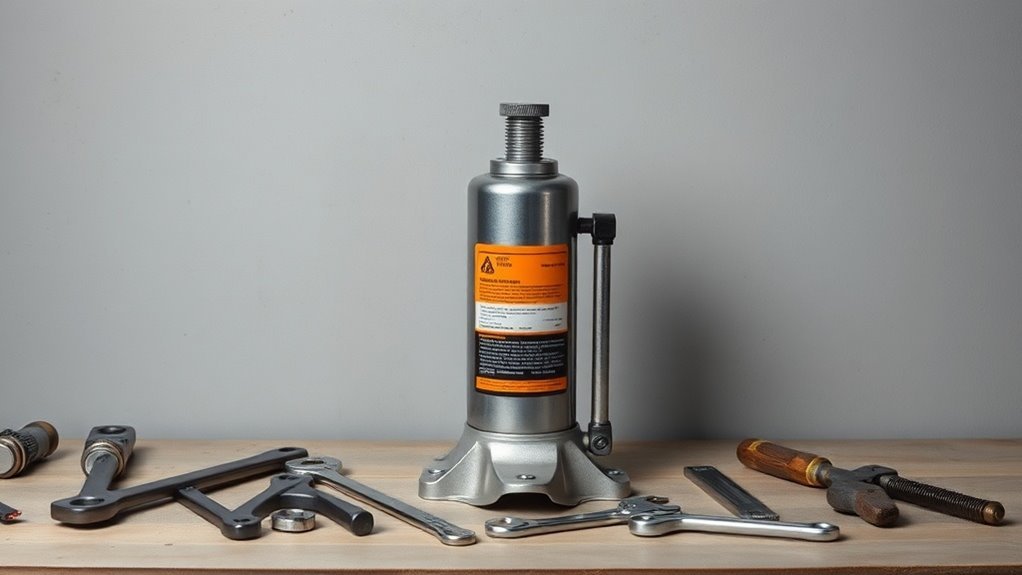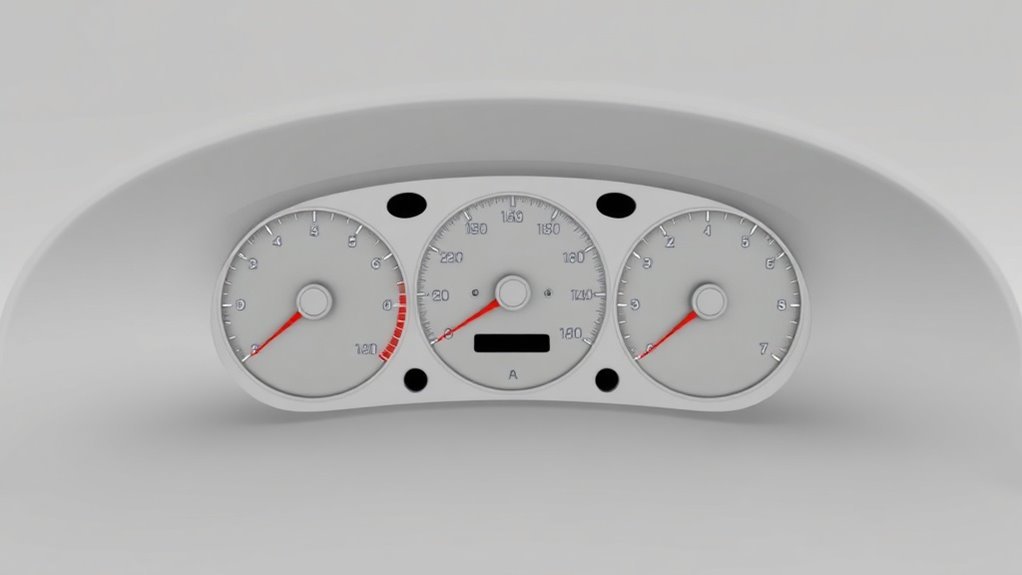Accuracy in Measurements: Tips for Beginners
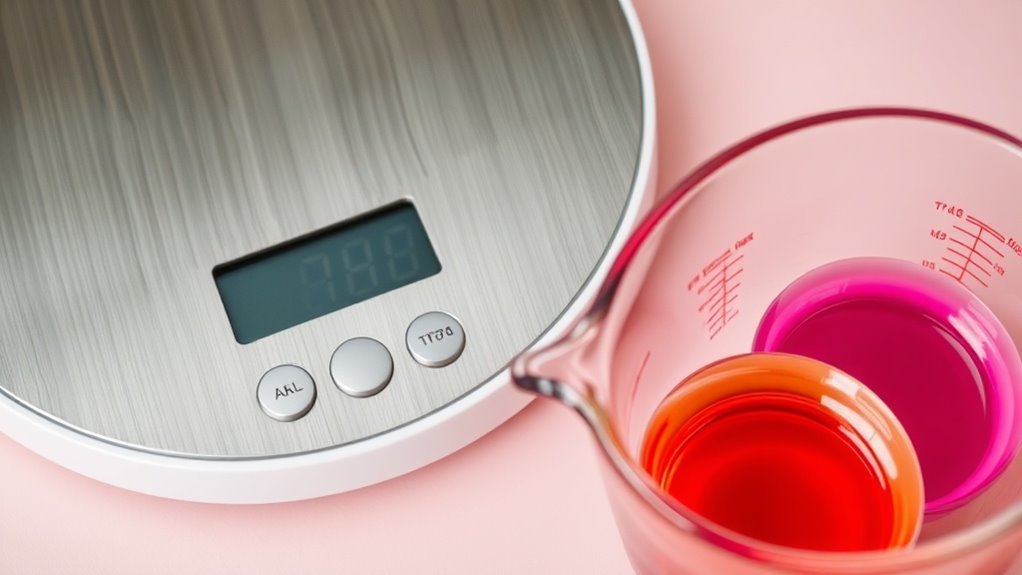
To improve accuracy in measurements, always choose the right tools and make certain they’re calibrated. Use appropriate units—metric or imperial—to interpret results correctly. Position your measuring tools at eye level for clearer readings. Avoid common mistakes like neglecting to double-check your instruments or assuming accuracy without verification. Practicing with different ingredients can help you refine your skills. Stick around to discover more tips that will elevate your measuring game to the next level!
Key Takeaways
- Select the appropriate measuring tools for the task, ensuring they suit the type of measurement required—linear, liquid, or weight.
- Regularly calibrate measuring instruments to maintain accuracy and check for zero adjustments before use.
- Always position measurements at eye level to avoid parallax errors and ensure correct reading of values.
- Be aware of measurement unit conversions between metric and imperial systems to interpret readings accurately.
- Practice measuring a variety of ingredients, using the correct measuring tools to build familiarity and confidence in your skills.
Understanding Measurement Units
When you think about measurements, it’s essential to understand the various units in use today. Different fields rely on specific units, so knowing whether you’re working with metric or imperial systems can make a big difference.
For instance, lengths may be measured in meters or feet, depending on your location or the tools you’re using. Weight can be expressed in kilograms or pounds, and volume might be in liters or gallons.
It’s also important to be aware of precision, as some contexts require exact measurements while others allow approximations. Familiarizing yourself with these units helps guarantee accuracy in your work, leading to better outcomes.
Recognizing the differences between these measurement systems is a key step in becoming proficient in measurement accuracy.
Choosing the Right Measuring Tools

Selecting the right measuring tools is crucial for achieving accurate results. You should consider the type of measurement you need to make—length, volume, weight, or temperature. For instance, a ruler or tape measure works best for linear measurements, while graduated cylinders are ideal for liquids.
When it comes to weight, a digital scale often provides more precision than a mechanical one. It’s also important to think about the scale of your project. For smaller tasks, pocket tools like calipers might be handy, while larger endeavors may require more extensive equipment, like a laser distance measurer. Proper measuring techniques can significantly improve the quality of your results.
Always prioritize quality over price. Investing in reliable tools can save you time and guarantee consistent measurements, helping you reach the accuracy you’re after.
Calibrating Your Measuring Devices
Calibrating your measuring devices is essential for achieving accurate results. Without proper calibration, even the best tools can lead you astray. Regular calibration ensures accurate measurements and helps avoid dangerous situations. Let’s explore the techniques you can use to guarantee your measurements are spot on.
Importance of Calibration
Although it might seem like a small detail, calibrating your measuring devices is essential for ensuring accurate results. When your tools are properly calibrated, you can trust the measurements they provide, which ultimately leads to better decision-making in your projects.
Inaccurate measurements can cause a cascade of errors, affecting not only your work but also safety and costs. By maintaining calibration, you minimize the risk of discrepancies that could compromise the integrity of your results.
It’s not just about precision; it’s about consistency over time. Regularly checking calibration helps you identify any potential issues before they escalate.
Calibration Techniques Explained
When it comes to guaranteeing accurate measurements, understanding calibration techniques is essential. Calibration guarantees your measuring devices provide reliable results.
Here’s how you can get started:
- Reference Standards: Use known reference materials for comparison. They’ll provide a benchmark for accuracy.
- Zero Adjustment: Always check the zero point of your device before use. A simple adjustment can make a big difference.
- Regular Intervals: Calibrate at consistent intervals, whether daily, weekly, or monthly, based on your usage.
- Environmental Conditions: Monitor temperature and humidity, as these can affect your device’s readings.
Reading Measurements Accurately
When it comes to reading measurements accurately, choosing the right tool is essential. You also need to have a solid understanding of measurement units to guarantee you’re interpreting the readings correctly. Finally, employing specific techniques can help you achieve greater precision in your measurements. Additionally, using tools such as laser levels can significantly improve your accuracy during home renovations.
Choosing the Right Tool
Choosing the right tool is essential for reading measurements accurately, as the quality of your results relies heavily on proper equipment.
Using the wrong instrument can lead to errors that affect your projects. Here are four tools you should consider:
- Calipers – Perfect for measuring internal and external dimensions with precision.
- Micrometers – Ideal for extremely fine measurements, ensuring you get accurate readings for smaller items.
- Tape Measures – Versatile for longer distances; look for one with clear, easy-to-read markings.
- Digital Scales – Great for weighing objects; make sure it has a reliable calibration feature.
Understanding Measurement Units
Accurate measurements aren’t just about the tools you use; they also hinge on a solid understanding of measurement units. Knowing whether you’re working in metric or imperial units is vital. For instance, a length might be expressed in centimeters or inches, and being clear on which system you’re using helps avoid costly mistakes.
It’s essential to familiarize yourself with common units, such as grams, liters, or ounces, and understand their conversions. A simple miscalculation can lead to errors in any project, whether it’s cooking, construction, or scientific experimentation.
Always double-check values and remember that precision in reading measurements means recognizing increments accurately.
Being methodical in understanding units will boost your confidence and enhance your overall accuracy in measurements.
Techniques for Precision
Five key techniques can greatly enhance your ability to read measurements accurately. Mastering these will help improve your precision and confidence.
- Eye level positioning: Always make certain your eyes are level with the measuring device to avoid parallax errors.
- Stable surface: Use a firm, flat surface to guarantee that the measurement remains steady.
- Read at the bottom of the meniscus: For liquids, read measurements at the bottom curve of the meniscus for accurate results.
- Calibrate your tools: Regularly check that your measuring instruments are properly calibrated for consistent accuracy.
The Importance of Consistency
While achieving precise measurements is essential, consistency plays an equally important role in ensuring reliable results. When you measure the same object multiple times, variations can confuse your outcome, leading to uncertainty. It’s vital to create a uniform approach to your methods and tools. By doing so, you not only enhance the accuracy of your readings but also build confidence in your results. Precision tools like calipers and micrometers help maintain exact measurements, which further supports consistency in your workflow.
| Measurement Method | Emotional Impact |
|---|---|
| Consistent Dual Measurement | Builds trust in data |
| Erratic Measurements | Fosters doubt and confusion |
| Routine Checks | Provides peace of mind |
Consistency is your ally in measurements. Focus on it, and you’ll find your results are much more reliable and meaningful.
Common Measurement Mistakes to Avoid
Though measurement may seem straightforward, several common mistakes can undermine your results.
It’s crucial to recognize and avoid these pitfalls to maintain accuracy.
- Using the Wrong Tool: Make certain you’re using the appropriate measuring device for the task. A kitchen scale isn’t the same as a bathroom scale!
- Not Calibrating: Failing to calibrate your instruments can lead to significant discrepancies. Always check before you start.
- Poor Eye Level: When reading measurements, position yourself at eye level. Looking from above or below skews your perception.
- Assuming Accuracy: Don’t assume that your measurements are correct without verification. Double-check whenever possible to catch errors before they impact your work.
Additionally, prioritizing precision measuring in your DIY projects can greatly improve the overall outcome.
Tips for Measuring Liquid Ingredients
Even with great attention to detail, measuring liquid ingredients often presents its own set of challenges.
To get it right, always use a liquid measuring cup, which has a spout for easy pouring. When pouring, make certain to fill the cup until the liquid reaches the marking at eye level; this helps guarantee accuracy.
Avoid measuring cups meant for dry ingredients, as their markings can be misleading. If a recipe calls for a specific amount, round up or down wisely based on the measurement tools you have.
Finally, always check for any bubbles in the liquid; they can lead to inaccuracies. These simple tips will help you measure liquids precisely and achieve consistent results in your cooking or baking endeavors.
How to Measure Solid Ingredients Properly
Measuring solid ingredients accurately is essential for achieving the right texture and flavor in your recipes. Here are some tips to help you get it right:
- Use the Right Tools: Invest in dry measuring cups and spoons for ideal precision.
- Scoop and Level: For flour and sugar, scoop your ingredient into the cup, then level it off with a straight edge for accuracy.
- Avoid Packing: When measuring brown sugar, gently pack it down but avoid overpacking, which can lead to excess amounts.
- Weigh If Possible: Using a kitchen scale provides the most precise measurements, especially for dense ingredients like butter or nuts.
Practicing Your Measuring Skills
Getting a feel for measuring ingredients accurately can elevate your cooking game greatly. To sharpen your measuring skills, start by practicing with a variety of ingredients. Use dry and liquid measuring cups for different purposes, and get familiar with the right way to fill them without packing or leaving gaps.
Try measuring a few common ingredients, like flour, sugar, and water, multiple times to see how consistent you can be.
Don’t hesitate to use a kitchen scale for more precision; it’s especially useful for baking.
Finally, take note of the measurements in recipes you enjoy, and challenge yourself by adjusting them. Regular practice will build your confidence, leading to more successful and delicious dishes over time!
Questions
What Is the Impact of Temperature on Measurement Accuracy?
Temperature can greatly affect measurement accuracy. If it fluctuates too much, materials may expand or contract, leading to errors. It’s essential to account for temperature changes to guarantee your measurements remain reliable and consistent in performance.
How Can I Prevent Measurement Errors Due to Parallax?
To prevent measurement errors due to parallax, always guarantee your eyes are level with the measurement scale. You can also use a digital caliper or read from a straight angle to enhance accuracy effortlessly.
Are Digital Tools More Accurate Than Traditional Measuring Instruments?
Yes, digital tools often offer increased accuracy due to precise readings and reduced human error. However, it’s essential to guarantee they’re calibrated correctly. Don’t forget, good technique still plays an important role in measurements.
What Should I Do if My Measurements Consistently Differ?
If your measurements differ consistently, it’s time to channel your inner Sherlock. Double-check your tools, guarantee they’re calibrated, and review your technique. Sometimes, even small changes can reveal the mystery behind those discrepancies.
How Do Environmental Factors Affect Measurement Precision?
Environmental factors like temperature, humidity, and air pressure can greatly affect measurement precision. If you’re unaware of these conditions, your readings might fluctuate, leading to inconsistent results. Always consider your measuring environment to improve accuracy.
Conclusion
To summarize, mastering accuracy in measurements isn’t just for seasoned pros—it’s something you can easily do too! By understanding units, choosing the right tools, and practicing your skills, you’ll see how precise measurements can transform your cooking or projects. Imagine the satisfaction of baking the perfect cake or crafting a flawless project because you nailed every measurement. Don’t let doubts hold you back; with a little patience and practice, you’ll become a measuring whiz in no time!

